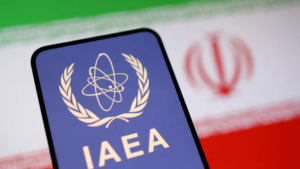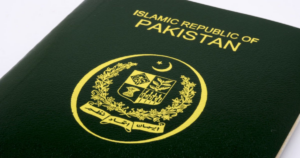
Oil and Gas Loading Terminals are gateways and logistical centres, enabling the import, export and storage of crude oil, LNG and petroleum products. They also possess infrastructure to process, refine and distribute these goods around the world, supporting the energy supply chains.
Mentioned below are the 10 largest oil and gas loading terminals in the Middle East.
1. Ras Laffan, Qatar
This port on the northeast coast of Qatar overlooks the Arabian Gulf and is the world’s largest export facility for petrochemicals and hydrocarbons.
It lies within the Ras Laffan Industrial City and is strategically placed on the shipping route between the Far East and Europe.

The port spans 56 square kilometres and is designed to export LNG, LPG, condensates, petroleum products and sulphur, derived from the processing of gas extracted from the North Field Gas Reservoir.
There are 6 LNG berths, of which 4 can accommodate QMax ships with a 266,000 m3 capacity. The others can receive QFlex and conventional LNG carriers.
An additional 6 berths handle condensate, Pygas, GTL and refinery products. There is a sulphur berth and 6 berths for dry cargo, of which two also handle RORO.
14 berths have facilities for offering bunkers and fresh water. They support ships involved in offshore exploration and production.
Two SPMs situated 54 km from the port can accommodate ships ranging from 85,000 to 320,000 DWT.
Around 500 ships and 10,000,000 tonnes of cargo are handled annually at this port.
2. Ras Tanura, Saudi Arabia
Situated on Saudi Arabia’s eastern coast, Ras Tanura is the largest oil port in the world, handling 90% of the country’s hydrocarbon exports and around 20% of the global consumption.
It can accommodate more than 2000 ships annually and load/unload 16 ships at once. It moves over 9 million barrels of hydrocarbons every day.
It has specialised terminals for crude oil, LPG, bunkering, etc.

The North Pier handles LPG, naphtha, crude oil, products and bunkers. It also includes 4 interconnected Sea Islands with berths for crude and fuel oil.
The Ju’aymah Crude Terminal, 18 nm northwest of Ras Tanura, has an oil platform, a control platform, and 6 Single Point Mooring buoys for crude oil and bunkers.
The Ju’aymah LPG Terminal has a two-berth pier for loading refrigerated liquefied petroleum gas (RLPG) onto LPG carriers.
Ras Tanura’s storage capacity is more than 50 million barrels.
3. Port of Fujairah, United Arab Emirates
Located 70 nm from the Strait of Hormuz, this is the world’s second biggest hub for supplying fuel to vessels, serving over 12,000 each year.
The port operates 24/7 and has deep-water berths, bulk loaders, a large anchorage and houses the Fujairah Oil Industry Zone.
Established in 1983, it is a key facility in the Middle East, handling exports and imports of crude oil, fuel products, and liquid bulk, supported by extensive storage facilities and the ADCOP pipeline.

It is a crucial maritime gateway to the Indian subcontinent, GCC countries and North Africa. Around 19,900,000 tonnes of cargo are handled annually at this facility.
Apart from liquids, it also deals with dry bulk like aggregates, limestone, etc and general cargo, containers, and cruise vessels.
4. The Al Başrah Oil Terminal (ABOT) & Khawr al ‘Amīyah Oil Terminal (KAAOT), Iraq
These are Iraq’s major offshore, deep-sea crude oil export facilities in the Persian Gulf, 50 km southeast of the Al-Faw Peninsula.
They are Iraq’s sister terminals and function as the main platforms for exporting its crude oil. ABOT is a bigger facility with many berths, while KAAOT is comparatively smaller in size.
Al-Basra Oil Terminal has a steel island structure with 4 berths, which can handle 4 tankers at once on 2 platforms, having a DWT of 35,000 to 350,000 tonnes.

The terminal’s capacity exceeds 3.3 million bpd, and KAAOT has an export capacity of 400,000 bpd.
Both terminals are heavily guarded and are under the control of the Iraqi Navy. U.S forces offer assistance and training to aid in security operations.
5. King Fahd Industrial Port (Yanbu), Saudi Arabia
This port lies 20 km south of Yanbu on Saudi Arabia’s Red Sea coast. It has a natural harbour covering 25 km and is shielded from the open waters by an offshore barrier reef which runs parallel to the coast.
It is the biggest outlet for the country’s crude, refined petroleum and petrochemicals.
The port covers 8 terminals, of which 7 are operational. These include facilities like the General Cargo and Container Terminal, Bulk Terminal, Export Refinery Terminal, Crude Oil Terminal, Yanbu Refinery Terminal, Local Refinery Terminal and NGL Terminal.
The port is situated at the intersection of shipping routes connecting the Far East, Europe, and North America, providing easy access to the Suez Canal and the Bab Al Mandeb Strait.
It handles a wide range of cargo, including crude oil, LPG, petrochemicals, chemicals, bulk and general cargo, RORO, and more.
Around 1800 vessels, over 85,000,000 tonnes of cargo and 201,470 TEUs are handled by the port annually.
6. Port of Dammam, Saudi Arabia
Also known as King Abdul Aziz Port, this facility lies on an artificial island around 5 nm off the coast, about 50 km south of Ras Tanura.
It is the largest port in the Persian Gulf and is the second busiest port in North Africa and the Middle East combined.
The port deals with the export services for the oil industry and has 43 cargo berths, a small craft harbour, and several support terminals, including a refrigerated cargo terminal, bulk grain terminal and a vessel repair facility.
The port also features extensive storage facilities, including grain silos, open yards, warehouses and cold storage.
Approximately 20,550,000 tonnes of cargo and 2100 ships are handled annually here.
7. Port of Salalah, Oman
This deepwater port with a sheltered harbour is the largest in Oman and boasts a container terminal, a general cargo terminal and a liquid bulk terminal. It is also the biggest exporter of gypsum in the world.
The container terminal has 6 berths and a capacity of 5 million TEU per annum.
The liquid bulk terminal has 2 berths with a draft of 18 m, and an annual handling capacity of 6 million tonnes. It deals with fuel, methanol, LPG, MEG and vegetable oil.
The general cargo terminal has 13 berths for dry bulk and 2 berths for liquid cargo. The port also handles containers, RORO, cement, steel, wheat, resin, plastics, livestock, etc.
Around 1500 ships, 2,850,000 tonnes of cargo and 3,000,000 TEU are handled annually here.
8. Jebel Ali Port, UAE
This port is located in the Jebel Ali Free Zone, 35 km southwest of Dubai and is operated by DP World.
It is the biggest man-made harbour in the world with 77 berths and facilities for handling aluminium, cement and gas.
It was merged with Port Rashid, which has increased its cargo handling capacity.

It now accommodates 14,000 ships, 77,380,000 tonnes of cargo, including 11,000,000 TEUs annually.
The port can handle RORO, containers, bulk vessels, general cargo ships and tankers. Offshore Island Container Terminal 3 is under construction, and the west quay is also being redeveloped.
The tanker berths can accommodate vessels with an LOA of 295 m and a draught of 14 m.
9. King Fahd Industrial Port (Jubail), Saudi Arabia
The Port of Jubail lies around 90 km north of Dammam in the Persian Gulf.
It has two harbours, the King Fahad Industrial Port to the north and Jubail Commercial Port to the south. They are protected by their own breakwaters.
As one of the biggest industrial ports in the Middle East, it serves as a gateway to the world’s biggest petrochemical complex.
It handles imports of raw materials for local industries and exports of refined petroleum products, petrochemicals, chemical fertilisers and sulfur.
The port plays a vital role in supporting the kingdom’s prominence in the global oil and gas industry. It has 34 berths and functions as a major outlet for petrochemicals produced in the Jubail Industrial City.
It handles approximately 44,800,000 tonnes of cargo and 1,650 vessels annually.
10. Mina Al Ahmadi, Kuwait
This facility is located on the northwest shore of the Gulf, 30 km south of Al-Kuwayt. It caters to tankers, crude products and gas carriers.
The terminals include South Pier, New Oil Pier, North Pier, Shuaiba Petroleum Products Pier, and Mina Abdulla Sea Island.
It serves as a critical asset between the Kuwait Petroleum Corporation and the national economy. It was the country’s first LNG facility; this service has been supplanted by the new and larger Al-Zour LNG Terminal.
The pilots, tugs and craft are owned and controlled by Kuwait Oil Company.
Around 41,000,000 tonnes of crude oil and oil products and 1500 vessels are handled at the port annually.







